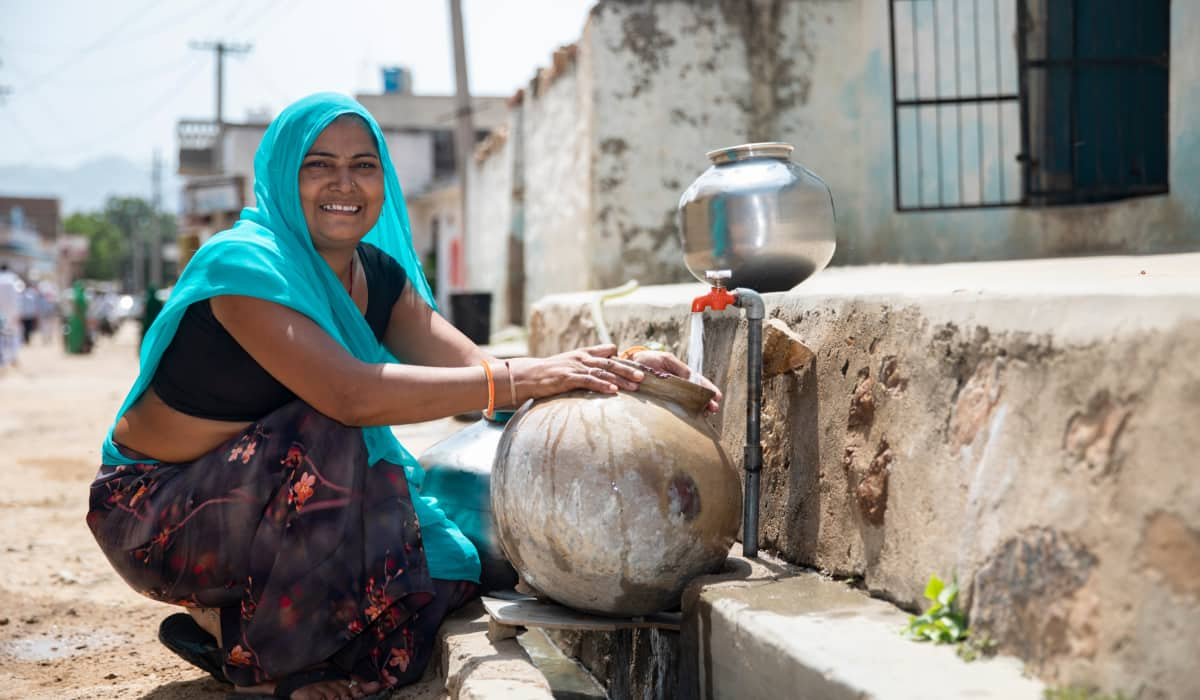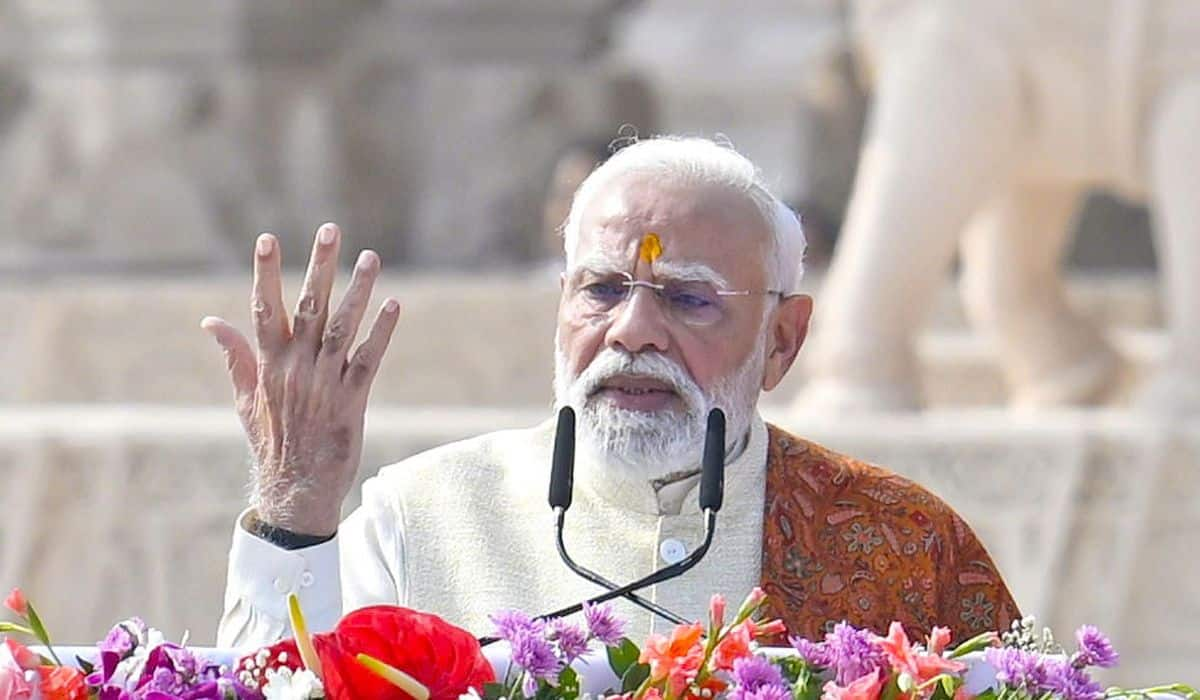Health is of fundamental importance to any individual. It also forms the core of any national strategy meant for higher growth and sustainable development since true development results only from a healthy populace, functioning at optimum productivity. Hence, PM Modi’s mantra of Health for All speaks volumes about his understanding of and commitment to India’s holistic wellbeing.
In his quest to create an India that is blessed with a robust present and a thriving future, PM Modi launched his visionary scheme, Ayushman Bharat in 2018. Certainly, a game-changer, this ambitious initiative is more than just a healthcare program. It causes a shift in the way India has looked at and dealt with healthcare over the years. From a sectoral and segmented approach, Ayushman Bharat envisions healthcare delivery via a comprehensive, need-based pathway. It introduces pioneering interventions to create a wholesome healthcare environment at all levels—primary, secondary, and tertiary.
Surely, it is a meaningful attempt to bring accessible and affordable medical care to crores of Indians, truly manifesting PM Modi’s promise of Garib Kalyan.
Ayushman Bharat is a bouquet of initiatives that not only bring more lives under public health cover but also improve the affordability of medical procedures while augmenting the existing public health infrastructure. It stands on four dynamic pillars—Pradhan Mantri Jan Arogya Yojana, Health and Wellness Centres, Ayushman Bharat Digital Mission, and Pradhan Mantri – Ayushman Bharat Health Infrastructure Mission.
Beginning with the PM Jan Arogya Yojana, it is by far the world’s largest health insurance plan funded by a government. Covering nearly 55 crore individuals belonging to 12 crore vulnerable families, the scheme offers an assured health cover of up to Rs. 5 lakh per family per year for secondary and tertiary care hospitalisation. Apart from giving access to the common man to good hospitals and standard treatments, PM Jan Arogya Yojana acts as a safety net, ensuring that medical emergencies don’t spiral into a cycle of debt.
To ensure the same, over 26,000 hospitals, including more than 11,000 private hospitals, have been empanelled under the scheme. A total of 6.2 crore free hospital admissions worth over Rs. 79,000 crore have been catered to via the scheme. This has resulted into immense savings in out-of-pocket expenditure, amounting to more than Rs. 1.25 lakh crore, for the poor. Had it not been for the scheme, the same treatment cost would have gone up by almost 2 times.
Further, a milestone 30 crore Ayushman Cards have been issued since 2018. Out of these, over 16 crore Cards were created only in the last two financial years. At this rate, almost 181 Ayushman Cards are created every minute.
PM Jan Arogya today stands for equity, entitlement, and empowerment. Acting as a healthcare guarantee to the poor, the scheme has ensured these services reach all, embedding gender parity along with regional and income parity in its delivery. This is exemplified via the nearly 14.6 crore Ayushman Cards created for females—making 49% of all Ayushman Cards issued. Further 48% of all treatments have been availed by female beneficiaries.
The second dynamic pillar of the flagship Ayushman Bharat scheme is the extensive focus of the government in building public health infrastructure at the grassroot level and aiding a shift towards preventive healthcare—Health and Wellness Centres now known as Arogya Mandirs.
The Modi government has established over 1.6 lakh health and wellness centres across the length and breadth of the nation. With the aim of taking comprehensive healthcare services to the doorstep of the most marginalised, the Arogya Mandirs are an exercise in upgrading existing sub-health and primary health centres to provide preventive, promotive, curative, palliative and rehabilitative services that are free, available to all, and closer to the community. These services cater to both child and maternal health as well as non-communicable diseases with provisions for free essential drugs and diagnostic services.
PM Modi’s approach towards establishing these centers across India is rooted in his emphasis not only on health but wellness, nudging people to choose healthy behaviours while improving their access to basic healthcare delivery.
The third pillar is Ayushman Bharat Digital Mission. A continuing stream in PM Modi’s extensive emphasis on creating a digitally empowered, knowledge economy, the Mission aims to give a concrete basis and form to an integrated digital health infrastructure in the country. Its key components include Ayushman Bharat Health Account (ABHA) for citizens, Health Professional Registry (HPR), Health Facility Registry (HFR), and the ABHA Application.
So far, we have created over 49 crore Ayushman Bharat Health Accounts with over 2.5 lakh healthcare professionals onboard. More than 2.25 lakh health facilities have also registered under the Mission.
By empowering individuals with information and awareness, the Ayushman Bharat Digital Mission introduces seamless flow of health data across the country. This would aid not only in better monitoring and evaluation of healthcare services but also supports evidence-based policymaking.
The fourth pillar under the umbrella of Ayushman Bharat is the Pradhan Mantri – Ayushman Bharat Health Infrastructure Mission (PM-ABHIM). Launched in the aftermath of the COVID-19 pandemic, PM-ABHIM aims to augment capacities of healthcare systems and institutions to better deal with any future public health emergencies. With an outlay of Rs. Rs. 64,180 crore till year 2025-26, the mission is plugging critical gaps in healthcare infrastructure along with surveillance mechanisms and sectoral research across rural and urban frameworks. Notably, it is the largest pan-India initiative to enhance public health infrastructure since the early 2000s.
Ayushman Bharat, as the name suggests, envisions a healthy and prosperous future for India. With its dedicated focus on the poor and the marginalised, the scheme ensures that accessibility no longer remains an issue, especially in the rural areas, and quality healthcare is no longer an exclusive privilege of the rich.
The success of Ayushman Bharat is reflected in the sheer numbers. Millions of beneficiaries have availed medical treatments, including complex and expensive procedures without bothering about financial repercussions. Besides, the scheme has opened up new avenues for the middle class and the youth as new medical facilities in tier-2 and tier-3 cities open up employment opportunities.
It would not be wrong to say that Ayushman Bharat is a standing example of how PM Modi has transformed a hitherto stagnant sector with visionary policies and their steadfast implementation. Leaving no one behind, this initiative writes a new healthcare narrative of India, one that is brimming with positivity and promise.















